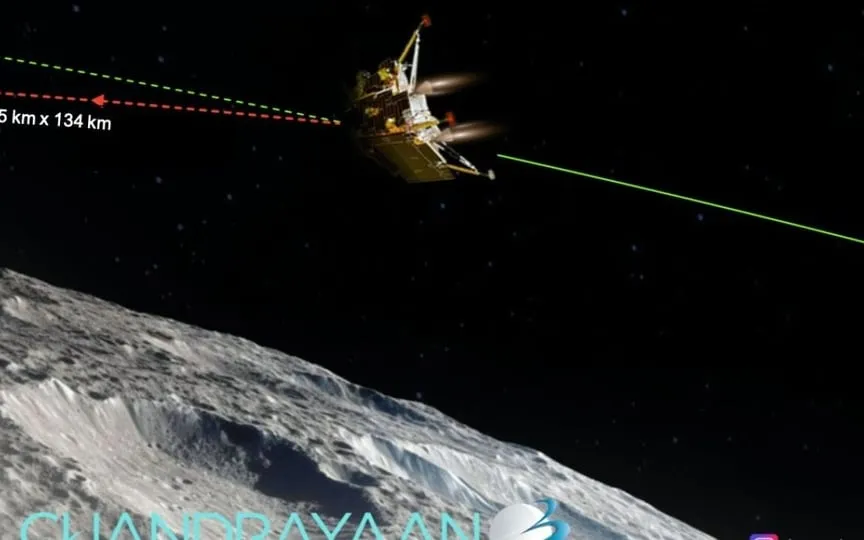India to Make Lunar History with Chandrayaan-3 Moon Landing in Three Days
In a span of three days, India’s Chandrayaan-3 mission is preparing for an unprecedented soft landing on the Moon. The Indian Space Research Organisation (ISRO) recently announced the thrilling accomplishment of the mission’s second and final deboosting operation. Following a series of additional verifications, the module will initiate its powered descent on August 23.
A crucial milestone reached
Chandrayaan-3’s Vikram lander, part of India’s third lunar mission, reached this critical milestone on its journey that began on July 14. The lander, named Vikram, is now in orbit, where its closest point to the Moon is 25 kilometers. the furthest is 134 kilometers. From this orbit, it will try to gently land on the Moon’s uncharted south polar region on Wednesday.
ISRO’s confidence in success
Expressing confidence in the successful mission, ISRO stated, “The second and final deboost operation has successfully reduced the LM orbit to 25 km x 134 km. The module is undergoing internal checks and is awaiting sunrise at the designated landing site. The powered landing is expected to begin on August 23, 2023, around 1745 hrs IST.”
Leaving a mark on the moon
Once safely on the lunar surface, the Pragyan rover will do more than collect data. It also leaves its mark and imprints the ISRO emblem and India’s national emblem, Ashoka’s lion capital at Sarnath, symbolizing India’s presence in the lunar landscape.
The goal is the history of the Moon
Achieving a successful moon landing would be a historic achievement for India, making it the fourth country to achieve this remarkable feat.
The Chandrayaan-3 mission holds significant promise. Dr. Apathukatha Sivathanu Pillai, former chief of research and development at the Defense Research and Development Organization (DRDO), emphasized its importance, saying it “will enable the identification of various lunar resources, especially helium-3, which is a promising future energy source.”
Separation of modules
Earlier this week, the lander separated from the propulsion module that carried it all the way from Earth. The propulsion module will continue to orbit the Earth, studying its atmosphere and measuring the polarization of light from clouds for months or even years.
First look at the moon
After this breakaway, the lander shared its first images of the Moon. After reaching the lunar surface, the Vikram lander takes photographs of the Pragyaan rover, which studies the chemistry of the lunar surface and searches for water. Its life cycle is one lunar day, which corresponds to 14 Earth days.
Chandrayaan-3 started its journey from the Satish Dhawan Space Center in Sriharikota on July 14 and entered lunar orbit on August 5. The countdown to this historic moon landing is now down to three days.




